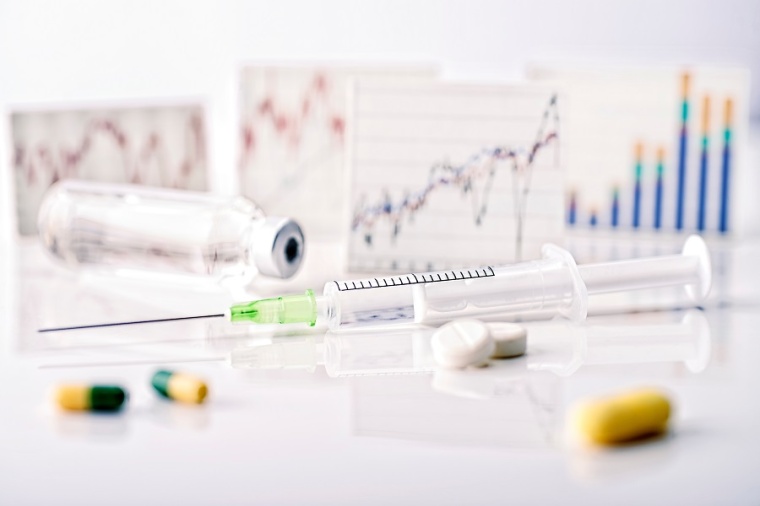Small Substances with Big Effects
The market for APIs is expanding significantly. Experts predict annual growth rates between 4.5 and 7.6 percent by 2029. There are plenty of good reasons for this: Chronic diseases are on the rise - and with them the need for medicines and active ingredients. In addition, the economic upswing in several emerging countries means that more people can afford novel medicines. APIs are also benefiting from the trend toward personalized medicine and the growing understanding of diseases. Meanwhile, API developers and manufacturers are working on increasingly sophisticated methods to better handle these delicate substances.

The market for active pharmaceutical ingredients (APIs) has been on a growth trajectory for years. According to the report of market research specialists, the global API market was valued at approximately $168 billion in 2020 and $174.17 billion in 2021. Based on estimates of Fortune Business Insights it will grow to $272.44 billion in 2028 at an annual rate of 6.6%. The European Fine Chemicals Group (EFCG) takes a similar view. The association, which calls itself the forum and the voice of the European fine chemicals manufacturer, forecasts annual growth rates of 4.5 % in the generic API sector and 4.8 % in the custom sector in the coming years.
“The growing trend towards new high-tech therapeutics ... will only serve to further emphasize the growing demand for advanced APIs”
Chronic Diseases Fuel API Demand
For market experts the reasons for the expected expansion are clear: “The growing trend towards new high-tech therapeutics coupled with the emergence of novel and innovative delivery systems and the evolution of personalized medicines will only serve to further emphasize the growing demand for advanced APIs”, argues EFCG. Fortune Business Insights, a market research company, adds that the growing demand for biopharmaceuticals, strong surge in the demand for cost effective drugs such as generic drugs, and technological advancements in API production are key drivers.
The increase in chronic diseases, including coronary artery disease, arthritis, diabetes, asthma, and cancer has already been observed in the past decades across the globe. Experts attribute this to the increase in the geriatric population - by 2050, more than 20% of the global population is anticipated to be aged over 65 years. Also changing lifestyles and dietary changes are the main reasons for the rise of such diseases. Transparency Market Research argues in a report, that the surge in sedentary lifestyle and increase in geriatric population reflects in a higher demand of APIs.
But there are more factors influencing the API business. According to EFCG the market is increasingly a global business integrated in the supply chain of pharmaceuticals, in which APIs constitute the most important components in terms of clinical efficacy and value.
Furthermore, there is a growing investment in R&D for API production processes, as well in quality, environment and safety. This results in better, safer and cleaner technologies and in a substantial increase of pharmaceutical technology know-how and intellectual property.
Driven by the growth in oncology drugs, several CDMOs have made or announced capacity expansions to manufacture highly potent active pharmaceutical ingredients (HPAPIs) and drug products. One reason: Growth in the oncology drug market continues to spur demand for such products, writes DCAT Value Chain Insights, a not-for-profit business development association for global bio/pharmaceutical manufacturing companies. HPAPIs are effective at much lower dosages than conventional APIs, but their effective properties impose special handling requirements.
On the other hand, CDMOs benefit from the fact that pharma companies increasingly focus on large molecule operations and outsource their small molecule manufacturing activities. More than 50 % of the global small molecules drug substances are outsourced to third party suppliers – similar outsourcing rates are assumed in the segment of oral solid dosage forms. Against this, sterile and aseptic drug products operations tend to be outsourced less due to higher level of criticality, which offers a significant upside potential for leading high-quality CDMOs.
Additionally, companies are increasing their size to face global competition. Mergers and acquisitions are taking place to pursue global projects. Finally, the demands on the patient side are changing. There is a continuous focus on patient convenience and quality of life, with treatments that require less frequent dosing and have minimal side effects. This is reflected also in more personalized medicine.
“[...] The market is increasingly a global business integrated in the supply chain of pharmaceuticals, in which APIs constitute the most important components”
Restraining Factors
However, the API world not only shines in bright light. There are also some restraining factors. Fortune Business Insides points to price fluctuations in emerging nations to restrict market growth. The periodic and unanticipated changes in the pricing policies of drugs in emerging regions, where most of the manufacturing companies are situated, is expected to hinder the market growth until 2028.
Dependency of the developed regions of the production of active ingredients on China has led to unforeseen changes in the pricing policy. This is projected to have a negative impact on the overall growth of this market. For example, in August 2018, the price of chlorpheniramine API shot up 57 times, as Hunan Er-Kang Medical Operation and Henan Jiushi Pharmaceutical were abusing their dominance as the only local supplier.
EFCG points out, that API manufacturers ask especially for global harmonized regulations with an increasingly strong relationship between the EU and the US. The European Fine Chemical association therefore advocates for strong regulatory measures to promote the use of quality APIs within Europe as an absolute necessity to protect public health and patients in Europe. One such measure would be to implement mandatory inspections of non-EU production sites whose APIs are sold within the European territory.
The organization also calls for EU authorities to encourage the removal of barriers such as regulatory or tariff-based hurdles to promote the entry of European products in higher growth non-EU markets.
Main Destinations: US and Asia Pacific
EFCG emphasizes that the API market is increasingly a global business integrated in the supply chain of pharmaceuticals, in which APIs constitute the most important components in terms of clinical efficacy and value. For many years North America has dominated the global API market, a trend which is anticipated to continue. The main drivers are the presence of major market players, significant healthcare expenditure, and early availability of new products. Additionally, a large patient base in the US and the surge in the number of API suppliers propel the market in the country. In this context healthcare experts predict that the increase in prevalence of lifestyle diseases and the increase in healthcare expenditure will boost the market in North America during the upcoming years.
Asia Pacific is expected to be the second largest market for APIs during the next years and is anticipated to expand at a significant annual growth until 2031. Favorable government initiatives, changing lifestyles leading to the development of diseases, rise in R&D investment, and technological developments in drug manufacturing processes are going to boost the market in the region.
The European region has traditionally a strong and important API manufacturing base. EFCG emphasizes the high level of technical competence and the range of skilled, highly qualified and experienced staff. Furthermore, some multinational pharmaceutical companies have taken the strategic decision to return to Europe for their API sourcing due to quality and reliability reasons.
For the future Europe is expected to witness a positive growth owing to the rise in funds for research programs along with the presence of major market players in this region. Also, the increase in R&D programs by various pharmaceutical and biopharmaceutical companies in Europe will fuel this market.
In-house Versus Outsourcing
In-house or outsourcing? – this is one of the key questions in API manufacturing. Market experts find arguments for both sides. They point out that some global pharmaceutical players prefer in-house production of APIs, believing that this provides control of the process from start to finish and offers the flexibility to adapt as and when required. This is especially useful when a company wants to respond to the market quickly and make a consumer-led change to the product, as it does not have to go through another company or rely on anyone else.
Nevertheless, there are also good reasons for contract manufacturing. Labor costs constitute most of any manufacturing process's cost. Outsourcing manufacturing eliminates the responsibility and costs involved in hiring the staff required to do the job properly.
Furthermore, quality is an important argument for outsourcing. “The trend towards outsourcing by big pharmaceutical multinationals is expected to continue growing, which will result in an increased demand for quality APIs,“ says EFCG. CDMOs like Siegfried could benefit from this trend. As specialists in their area, they can deliver what their clients ask for - quality and reliability - to avoid public health risks.
Quality Is Key
Throughout the process, API producers face a number of complex technological challenges. “The most efficacious APIs are not always the simplest candidates in terms of solubility, bioavailability, and stability,” say market experts. They argue that many APIs are not being commercialized as they are poorly water soluble, exhibit less stability, or become too viscous at higher concentrations.
A key factor to tackle these challenges is an advanced formulation, paired with high quality excipients. Taking advantage of the right and especially high-quality excipients is key and contributes to many factors such as stability, purity, and safety of the final drug product.
EFCG points out that clients are demanding more quality and more reliability from their API sources to avoid public health risks. Therefore, compliance, competitiveness and sustainability remain the most important drivers for the European API business with no compromise on quality.
One thing is for sure: the technological and regulatory requirements for API developers and manufacturers are becoming increasingly demanding.
Author: Thorsten Schüller, CHEManager
















